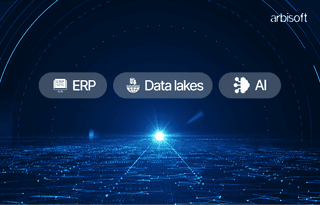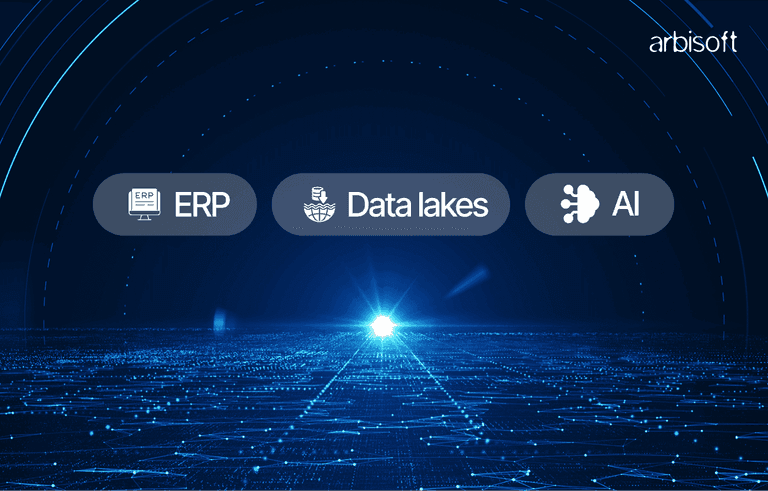We put excellence, value and quality above all - and it shows




A Technology Partnership That Goes Beyond Code

“Arbisoft has been my most trusted technology partner for now over 15 years. Arbisoft has very unique methods of recruiting and training, and the results demonstrate that. They have great teams, great positive attitudes and great communication.”
Sustainable Tech: Innovations in Biodegradable Electronics, Renewable Energy, and Green Data Centers

Imagine a world where your old gadgets decompose naturally instead of piling up in landfills, where the energy powering your home comes from the sun and wind, and where data centers run on clean energy with minimal environmental impact. This isn’t science fiction; it’s the future of sustainable technology.
In 2022, the world generated 62 million tonnes of electronic waste (e-waste), but only 22.3% was properly collected and recycled, leaving billions of dollars’ worth of recoverable resources unaccounted for. The rest contributes to pollution and poses health risks to communities worldwide.
In this blog, we’ll explore how the tech industry is making strides in sustainability through innovations in biodegradable electronics, renewable energy, and green data centers. Let’s uncover each of these transformative areas in detail.
Stay ahead in green tech!

Download our exclusive infographic on the Top 10 Green Tech Trends to Watch in 2024 and stay ahead with the latest innovations, insights, and projections shaping a greener tomorrow!

1. Biodegradable Electronics: Tackling the E-Waste Problem
We live in a world of constant tech upgrades—new phones, laptops, and gadgets hit the market every year. This results in an increasing amount of electronic waste, or e-waste, which is expected to reach 74 million metric tons by 2030. Traditional electronics are composed of non-biodegradable materials such as plastics and metals, some of which contain toxic substances like lead, mercury, and cadmium. These materials can persist in landfills for decades, leaching harmful chemicals into the environment.
What are Biodegradable Electronics?
Biodegradable electronics are designed to decompose naturally after their useful life, reducing their environmental impact. They are made from eco-friendly materials like organic polymers, cellulose, silk, and other biodegradable compounds. Researchers are even exploring the use of natural fibers like those from plants and fungi to replace plastic components in electronic devices.
The Benefits of Biodegradable Electronics:
1. Cutting down on e-waste: Traditional plastics can take hundreds of years to decompose. Biodegradable alternatives can break down in a matter of weeks or months, significantly reducing the accumulation of e-waste.
2. Reduced pollution: These devices use non-toxic materials that don’t release harmful substances into soil and water during decomposition.
3. Energy-efficient manufacturing: By using renewable resources such as plant-based polymers, biodegradable electronics generally have a lower carbon footprint during production.
One innovative example is the work from the University of Illinois, where researchers have developed transient electronics—devices that can dissolve in water after use. These flexible, biodegradable circuits and batteries could soon be used in products like wearable sensors or temporary medical implants.
2. Renewable Energy: The Key to a Greener Tech Industry
The tech industry relies heavily on energy to power devices, data centers, and manufacturing processes. Unfortunately, fossil fuels are still the primary source of this energy. In 2021, energy production accounted for approximately 75% of global greenhouse gas emissions, underscoring the urgency to transition to renewable energy sources.
What is Renewable Energy?
Renewable energy comes from sources that are naturally replenished, such as the sun, wind, and water. Solar panels, wind turbines, and hydropower systems are some of the most commonly used renewable technologies today.
How Renewable Energy is Transforming the Tech Industry:
1. Tech giants going green: Major tech companies are leading the shift towards renewable energy. For example, Apple powers all its facilities, including its data centers, with 100% renewable energy. Google achieved the same milestone in 2017 and is one of the largest corporate buyers of renewable energy, with continued investments in solar and wind projects.
2. Powering devices sustainably: As renewable energy becomes more accessible, consumers can charge devices like phones, laptops, and even electric cars using clean energy. This transition not only reduces emissions but also lowers energy costs over time.
3. The rise of electric vehicles (EVs): Electric cars are becoming a significant part of the renewable energy conversation. In 2023, an estimated 14 million electric vehicles were sold globally. When paired with clean energy sources, EVs produce zero direct emissions, making them a cornerstone of sustainable tech.
In addition to reducing emissions, renewable energy is driving job creation. The renewable energy sector employed 12.7 million people globally in 2022, and this figure is expected to rise as more countries and companies invest in green energy infrastructure.
3. Green Data Centers: Reducing the Digital Carbon Footprint
Data centers are the backbone of the modern internet, responsible for running everything from streaming services to cloud storage. However, their energy consumption is staggering. In 2022, data centers consumed about 1% of global electricity, a number expected to grow with the increased demand for digital services. With data traffic growing at 24% per year, the environmental impact of data centers will continue to rise unless sustainable practices are adopted.
What are Green Data Centers?
Green data centers are designed to operate with minimal environmental impact. They incorporate energy-efficient technologies and often rely on renewable energy sources to power their operations.
How Green Data Centers are Making a Difference:
1. Energy-efficient cooling systems: Traditional data centers rely on energy-intensive air conditioning systems to cool down servers. Green data centers are adopting more efficient methods, such as liquid cooling or situating facilities in naturally cold environments like northern Sweden, which reduces the need for artificial cooling.
2. Renewable energy-powered operations: Leading tech companies like Microsoft and Facebook (Meta) are shifting their data centers to run entirely on renewable energy. Microsoft aims to make its data centers carbon negative by 2030, while Meta already powers its data centers with 100% renewable energy.
3. Innovative designs: One example of cutting-edge sustainability is Microsoft’s underwater data center experiment, which uses ocean water to naturally cool the servers, significantly reducing energy consumption. This approach has the potential to revolutionize how data centers are managed in the future.
As global reliance on cloud computing, artificial intelligence, and other digital services continues to grow, green data centers will play a crucial role in reducing the tech industry’s overall carbon footprint.
Final Thoughts
The transition to a sustainable tech industry is well underway, with innovations in biodegradable electronics, renewable energy, and green data centers leading the charge. These advancements offer not only environmental benefits but also economic and social gains, such as reduced e-waste, cleaner energy sources, and job creation in the renewable energy sector. As technology continues to evolve, embracing sustainable practices will ensure that the digital age doesn’t come at the expense of our planet.
By adopting these innovations and leveraging ai and data science services to optimize energy consumption, the tech industry is proving that growth and sustainability can go hand in hand—paving the way for a cleaner, more eco-friendly future.
























